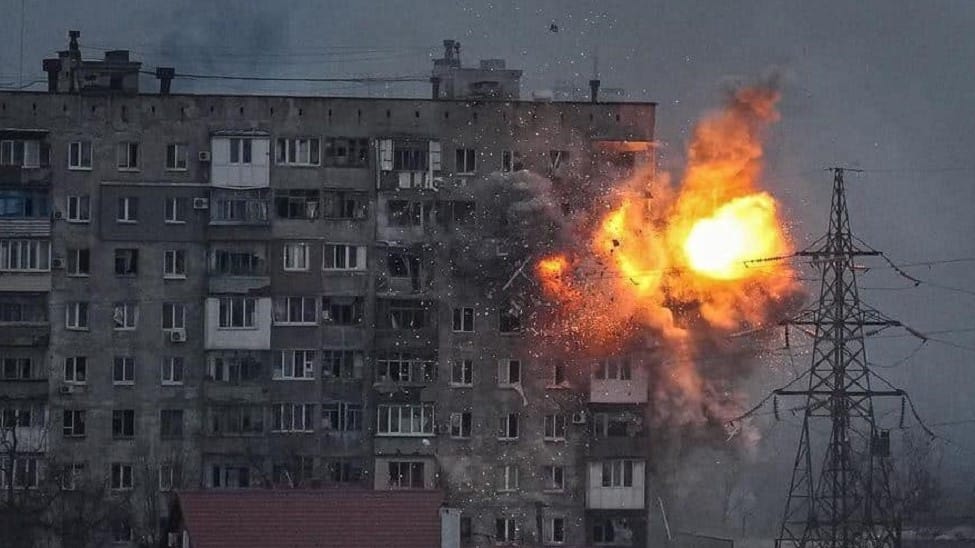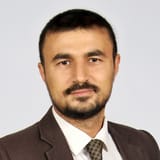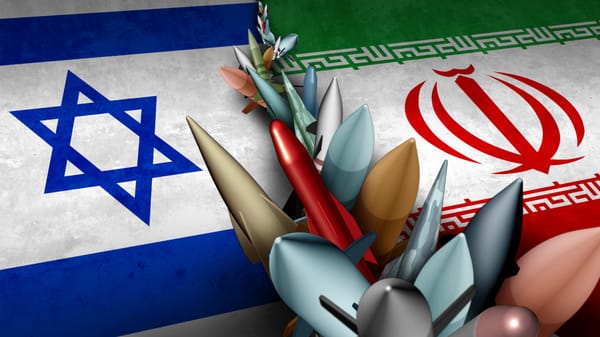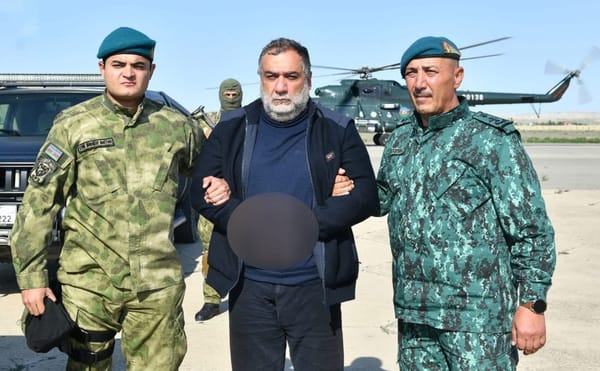Four Perspectives on a Single Invasion: Russia’s Attack on Ukraine as Reflected in the Israeli Press

Lecture Theses at the Tel Aviv House of Scientists — February 12, 2025.
How were the events of February 24, 2022, portrayed in the Israeli press in different languages? In what ways did coverage differ in Hebrew, English, Arabic, and Russian? What key points did journalists emphasize, and which information strategies did they employ?
The lecture, “Four Perspectives on a Single Invasion: Russia’s Attack on Ukraine as Reflected in the Israeli Press,” focuses on how both mainstream and community-based Israeli newspapers reported on the initial phase of Russia’s aggression against Ukraine. We will examine the central narratives, compare the approaches of leading Israeli print outlets, and seek to understand why the same reality can sometimes appear in such different interpretations.
The lecture marks the third anniversary of Russia’s invasion and will be especially interesting for those studying journalism and media theory.
Introduction
Today, we have gathered to discuss how Israeli media in different languages covered the start of the war between Russia and Ukraine in February 2022 and to explore why, in a multicultural society, a single conflict can be perceived in so many different ways. This study is also important in the broader context of the press’s role in shaping public opinion on armed conflicts—whether that conflict is the war in Iraq, the civil war in Syria, or the war between Israel and Hamas.
In modern media, there is a concept known as “domestication”—the process by which foreign news agendas are adapted to the values and expectations of a particular audience. In a multilingual country like Israel, this adaptation becomes more complex because each linguistic and cultural community has its own historical background, distinct perception of global events, and unique “lens” through which it views current affairs.
We will examine how, in February 2022, Israeli media in Hebrew, English, Arabic, and Russian covered the first days of the Russian invasion of Ukraine and what the outcome was for each target audience.
Our research was based on the analysis of several dozen articles and news items from 16 of Israel’s largest outlets (print plus websites). These are media sources that carry weight both within their respective linguistic communities in Israel and beyond:
- Hebrew: Haaretz, Israel Hayom, Yedioth Ahronoth, Maariv
- English: Haaretz, Israel Hayom, The Jerusalem Post, The Times of Israel
- Arabic: Panorama, Al-Ittihad, As-Sonara, Kul al-Arab
- Russian: Vesti, Detali, Israel Info, Mig News
In analyzing materials in these four languages, we focused on three key aspects:
- Domestication of war narratives: How do Israeli media “translate” foreign events into contexts that their audience will understand?
- Framing of “Us,” “Them,” and “Others”: Which images of the main participants in the war are created in each linguistic environment?
- Solidarity and criticism: Where is the boundary between rallying society around “national interests” and criticizing the authorities?
Additionally, we noted that in Israel, the country’s own military experience (for instance, the conflict with Hamas) is often used to draw parallels and make sense of international events.
I suggest we now turn to an examination of how the media worked with materials on the Russian-Ukrainian war and consider why, in one and the same country, such different portrayals emerged.
Domestication of War Narratives
During major international crises, every country seeks to cover events in a way that is as clear and relevant as possible for its own audience. This process is referred to as “domestication.”
For example, during the U.S. war in Iraq, European media often highlighted the humanitarian crisis and the plight of refugees. American media concentrated more on national security issues. If we shift our view to Israel, we see an even more complicated landscape, as Israel’s media market is multilingual. Each linguistic community has its own historical and cultural codes, and the media take these into account when presenting the material.
In the case of the war between Russia and Ukraine, Hebrew-language outlets most frequently shifted the news into the realm of “How does this affect Israel?” They addressed security considerations, examined parallels with Middle Eastern conflicts, and explored the responses of the United States and Russia as foreign policy actors. Russian-language media focused on the fate of Jews in Ukraine, on repatriation, and on carefully criticizing Moscow (while avoiding the direct use of the word “aggressor” when referring to Israel’s policies). English-language media tried to communicate with a global audience but still “grounded” the conflict in Israel’s national interests. Meanwhile, Arabic-language outlets, as it turned out, showed little interest in the core essence of the war, limiting their coverage mostly to secondary stories (sports and critiques of the West’s “double standards,” etc.).
Framing “Us,” “Them,” and “Others”
A key part of any war chronicle is defining who is involved in the conflict in terms of “us” (those on our side, sharing our worldview), “them” (the enemy), and “others” (observers not directly involved).
In coverage of the Israel–Hamas war, Hebrew-language media generally present Israel as the victim of terror and Hamas as the aggressor. Arabic-language outlets often take a contrasting approach.
In the context of the Russia–Ukraine war, “us” and “them” were also divided in different ways. In Hebrew- and English-language outlets, Ukraine was most frequently depicted as a victim bravely defending itself from an invasion. Russia was usually shown as the side initiating aggression, yet not excessively demonized so as not to contradict Israel’s official position of caution (the state attempts to maintain pragmatic relations with Russia due to the situation in Syria).
In Israel’s Russian-language media, one might have expected significant sympathy for Russia or, alternatively, sharper criticism. However, it turned out that the overall tone resembled that of the Hebrew- and English-language press: Russia is portrayed as the aggressor, and Ukraine as the suffering party. Fully pro-Russian or “pro-Kremlin” voices, which are popular in Russia itself, hardly found a platform in the Israeli media discourse.
Arabic-language outlets in Israel, since they rarely touched on the invasion at all, did not develop a detailed image of who was in the right and who was in the wrong, remaining outside any in-depth analysis.
Solidarity and Criticism
In wartime, the media simultaneously fulfill two functions. On one side, they can unite society around a “national cause” or express sympathy for victims abroad. On the other side, they must preserve the capacity to criticize those in power rather than becoming straightforward propaganda.
In the case of the war between Russia and Ukraine, Israeli media (whether in Hebrew, English, or Russian) demonstrated genuine solidarity with Ukraine, focusing on the situation of refugees, particularly Jewish communities. However, complete condemnation of Russia along the lines of the United States or the European Union was seldom heard. Ministers often spoke more firmly, whereas the prime minister avoided making strong statements—and the press conveyed this caution.
Hence, “solidarity” primarily took on a humanitarian dimension (aiding refugees, repatriation). Within Israel, “criticism” generally amounted to careful questioning: Should the government adopt a firmer stance toward Moscow? Meanwhile, direct accusations of “betraying Ukraine” toward the Bennett/Lapid administration were almost never voiced, setting Israel’s discourse apart from that of some Western countries that demanded the toughest possible sanctions against the Russian Federation.
Analysis of the Press by Language Segments
Hebrew-Language Segment
Here, we observe:
- Personalizing the conflict through figures like Kyiv Mayor Vitali Klitschko or President Volodymyr Zelensky.
- Emphasizing global reactions: support from the West, sanctions, and military aid.
- A focus on national security: articles about the “return to conventional warfare” and conclusions about the importance of a strong ground army for Israel.
- Attention to the Jewish community: an interview with Kyiv’s chief rabbi about fears and the need for assistance.
- Israel as a possible mediator: discussions about whether Jerusalem could serve as a venue for negotiations.
Meanwhile, the war’s dramatic character is reinforced by vivid reports on hostilities and accompanying visuals (photographs of attacks, missile strikes, etc.).
English-Language Segment
Although Israeli media in English target an international audience, they still adapt (“ground”) the conflict to an Israeli context:
- Providing detailed explanations of the military imbalance (“Ukrainian forces vastly outnumbered…”), noting that Russia gained combat experience in Syria—a region that intersects with Israel’s interests.
- Describing cautious diplomacy: the prime minister supports Ukraine but does not publicly label Russia as the aggressor, taking into account Russia’s influence in Syria.
- Examining new alignments in Eastern Europe, including Poland’s key role in spearheading an anti-Russian coalition.
- Highlighting humanitarian aid and evacuations: Jewish agencies are overwhelmed by requests for repatriation from Ukraine.
- Not overlooking sharper remarks from some Israeli ministers condemning the “barbarity” of Russia’s actions, although the government’s overall stance remains more restrained.
On the whole, English-language outlets balance global perspectives (sanctions, worldwide outrage) with Israel’s standpoint (security, politics, repatriation).
Arabic-Language Segment
The most modest coverage, both in scope and depth. Only two articles:
- A story about the footballer Oleksandr Zinchenko, portraying the war mainly as a personal tragedy for an athlete rather than a geopolitical crisis.
- A publication condemning what the authors perceive as the Western media’s “double standards,” showing greater empathy for Ukraine than for conflicts in the Middle East or Africa.
It is possible only to speculate on the reasons for such minimal coverage: the Arabic-speaking audience in Israel is more concerned with Middle Eastern conflicts, and large-scale international stories that do not directly involve Arab communities remain on the sidelines.
Russian-Language Segment
This segment is characterized by “cautious neutrality” and the unique nuances of “domestication”:
- Repeatedly stressing that Israel “condemns” the very fact of the invasion yet tries to avoid directly calling Russia an aggressor, due to concerns over security (the situation in Syria).
- Central focus on the fate of the Jewish community. Refugees, aid, and evacuation offer a strong link between Russian-speaking outlets and their local readership, many of whom emigrated from former Soviet countries.
- Criticism of Russia is generally more restrained than what is seen in the European press; terms such as “invasion” and “undermining the foundations of the world order” do appear, but strong accusations of “war crimes” are rare.
- Pro-Kremlin narratives are virtually nonexistent, indicating that even Russian-language Israeli journalists are unwilling to relay Moscow’s official rhetoric in a propagandistic form.
Final Observations
There is an overall context of “caution.” Israel, positioned between its alliance with the United States and the practical need to coordinate with Russia in Syria, has chosen a foreign policy that combines sympathy for Ukraine with closed channels of communication with Moscow. This largely explains why, in all linguistic segments, we see support for Ukraine and condemnation of the war—but without the most extreme formulations.
A humanitarian agenda functions as a point of consensus. Nearly all outlets underscore the need to assist the Jewish community and refugees, describing their situations, evacuations, and the work of relevant agencies. This compassionate emphasis draws together a variety of linguistic platforms, even if they differ in tone.
Differences in depth and detail:
- Hebrew- and English-language media offer the broadest scope, covering everything from geopolitics to military timelines, from parallels to Israel’s own experiences to a worldwide reshuffling of power.
- Arabic-language outlets devote attention only to a handful of stories, without delving deeply into political aspects.
- Russian-language outlets concentrate on repatriation, maintaining a balance in Israel’s relations with Russia, and decline to broadcast pro-Russian propaganda—contrary to expectations that it might gain traction in the Russian-language segment.
Solidarity and criticism. Israeli media strive to show solidarity with Ukraine by emphasizing humanitarian assistance, but they avoid an overt clash with Russia. Criticism of government officials or the Israeli cabinet is generally confined to whether Israel is doing enough to support Ukrainians and how this might affect national security.
Israel’s media landscape is multilayered. In practice, there are several “Israels,” each speaking its own language and adapting the same war for its audience in its own way. Despite the differences, the common theme is to condemn the invasion and support the civilian population of Ukraine while preserving Israel’s strategic interests.
Conclusions
Dear colleagues, we have reviewed how four linguistic segments of the Israeli press—Hebrew, English, Arabic, and Russian—covered the start of the war between Russia and Ukraine three years ago. The picture that emerges is as follows:
- Foreign policy caution. In every segment, there is a clear desire by Israel to balance solidarity with the West against the need to cooperate with Russia.
- A humanitarian perspective. The unifying theme is the emphasis on the Jewish community in Ukraine and on refugees in general.
- Different levels of detail. Hebrew- and English-language outlets covered the topic in a deeper, more multi-faceted way; Arabic outlets did so minimally; Russian-language outlets focused on refugee assistance and diplomatic caution.
- Absence of radical pro-Russian voices. Even in Russian-language media, such voices failed to take root—highlighting the specific nature of Israel’s media market, where one-sided propaganda narratives do not find a foothold.
Thus, Israel’s information space appears to be layered. Each linguistic “stratum” adapts the same events to the audience’s own needs and expectations. Amid these distinctions, one overarching motif stands out: sympathy for Ukrainians, acknowledgment of Russia’s aggressive actions, and a desire not to escalate tensions with Moscow.
These observations help us better understand how, in a multicultural society, the press operates during times of armed conflict. Such knowledge is crucial for media researchers, as well as for those shaping information policies and public opinion.
Lecture recording on the YouTube channel of the Tel Aviv House of Scientists.
You can download the text of this article at the link below.
Via the links below, you can view:





